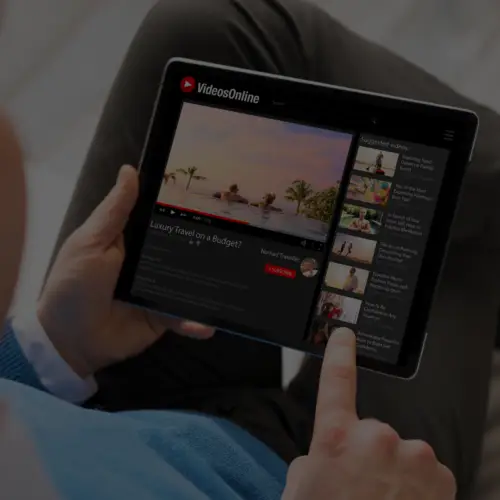05 Jul Data Reveals Insights Into The Effectiveness of Post Automation
This is a guest post by Tristan Handy. Tristan is the Director of Operations for Argyle Social, a social media marketing software and dashboard that helps businesses create real returns from the social channel. Find him on Twitter @jthandy.
Post automation has been a hotly debated topic within the social media community since RSS posting tools were first released back in 2007. Social media professionals were originally very reactionary but have slowly embraced automation technologies when they are employed “appropriately”.
I’ve followed this conversation for the past four years and have never come across solid research on what works and what doesn’t. Well, that changes today. And the data spells out some surprising insights:
- There is very little variance in the click and conversion impact of manual vs automated posts.
- Posts published immediately generate 74% more conversion value than scheduled posts.
- Posts scheduled on a 24 hour or greater delay generate 6x LESS conversion value than immediate posts.
Should You Automate? Definitive Results from 70,000 Posts
Before I lay the numbers on you, allow me to give you just a little bit of background on their source. I work for Argyle Social, a social media management dashboard. Argyle provides manual and automated publishing tools for Twitter, Facebook and LinkedIn, and tracks interactions, clicks, and conversions for every post.
The data that I’m going to share with you is based on a sample of our customers’ activity on our platform. The selected sample includes 381 companies and more than 70,000 total posts from November 2010 to May 2011. Companies range from small to very large, and are distributed across most major industries.
There are two types of post automation that I analyze: RSS automation and scheduled manual posting.
- RSS automation involves plugging in the URL of an RSS feed and posting every time a new item is found in that RSS feed.
- Scheduled manual posting involves manually writing a post, and then scheduling it to be posted at a later date and time.
Is Post Automation Effective at Generating Clicks?
If you are using social media to generate leads and sales, clicks are the heart of any social media marketing effort. If people aren’t reading the content you’re sharing, you’re not going to influence any other type of sharing or purchase behavior either.
It turns out that there is no significant difference between the click rates of posts submitted via RSS automation and those submitted manually. Across 70,141 posts in our sample set, 6,991 (10%) were submitted via RSS and 63,150 (90%) were submitted manually. Posts submitted via RSS received an average of 24.4 clicks per post where manual posts received 23.4 clicks per post.
We also saw no significant difference in the click rates of posts submitted immediately vs. those scheduled for a later posting date. Posts that were submitted immediately were 29.4% of the total and received an average of received an average of 22.5 clicks per post. Posts that were scheduled for a later posting date were 70.6% of the total and received an average of 23.8 clicks per post.
With these results, we can conclusively state that for marketers looking to generate attention and awareness, post automation is every bit as effective as posting manually. If attention is your goal, there’s no reason that you shouldn’t save yourself time and energy by employing these types of automation tools.
Is Post Automation Effective at Generating Conversions?
Now that we’ve shown that post automation is just as effective at generating clicks, let’s dig into automation’s impact on conversions.
An aside: measuring conversions is still nascent in social media marketing, and many community managers still have trouble linking social media activity to business outcomes. The secret to making this connection is multi-touch conversion tracking. Social media typically isn’t the final click that causes a sale or generates a lead, but it influences those behaviors, and this influence is measurable.
Based on our analysis, there is no significant difference between posts published via RSS automation and posts published manually. RSS posts influence an average of $268 in revenue and manual posts influence an average of $267 in revenue. It doesn’t get much closer than that.
Results diverge significantly when it comes to scheduled posting. Posts scheduled to publish in the future have an average influenced revenue of $177, while posts published immediately have an average influenced revenue of $308, a “timeliness bonus” of 74%.
That’s a huge difference, and warranted further investigation. Is there truly a relationship between timeliness of a post and the revenue it influences? It turns out there is, and a strong one.
Breaking down posts on a sliding scale of timeliness – from posts scheduled to publisher under two minutes ranging to posts schedule to publisher more than 24 hours in the future – illustrates a resounding relationship between timeliness and influenced revenue.

The question is, what is this correlation telling us? And how should marketers take this into account when posting? It’s hard to know for sure, but I have some educated guesses based on anecdotal customer use cases.
- People like to sit down at their computer for 30 minutes once per day and schedule several posts to go out at various times throughout the day. This type of behavior generates clicks (as shown earlier) but is informational and likely doesn’t generate as many conversions.
- Marketers who really care about maximizing exposure often repost the same content multiple times. While this behavior is effective at generating awareness, it appears that reposts generate fewer conversions.
When designing your social media marketing strategy, remember: timeliness matters when it comes to generating revenue.
In Summary
 One of the key ways that social media marketers are able to keep up with the ever-flowing content stream is by using post automation tools to allow us to get away from our keyboards. But does post automation cause performance to decrease? If so, would be hard for us to continue justify using these techniques.
One of the key ways that social media marketers are able to keep up with the ever-flowing content stream is by using post automation tools to allow us to get away from our keyboards. But does post automation cause performance to decrease? If so, would be hard for us to continue justify using these techniques.
Fortunately, we’ve shown that post automation is just as effective as manual posting in most situations. Both RSS and scheduled posting are just as effective at generating clicks, and RSS posting is just as effective at generating conversions. We did surface a cautionary tale though: content timeliness is strongly associated with conversions. If you are looking to drive revenue in your social media campaigns, make sure to measure the impact of post scheduling.
Resources
http://www.socialmediaexaminer.com/4-useful-twitter-automation-tools-and-how-to-use-them/
http://www.socialmediaexaminer.com/3-simple-steps-for-creating-social-media-visibility/
http://www.blogworld.com/2011/02/10/social-media-automation-the-good-the-bad-and-the-ugly/
http://www.kunocreative.com/blog/bid/54069/Pros-and-Cons-of-Social-Media-Automation






